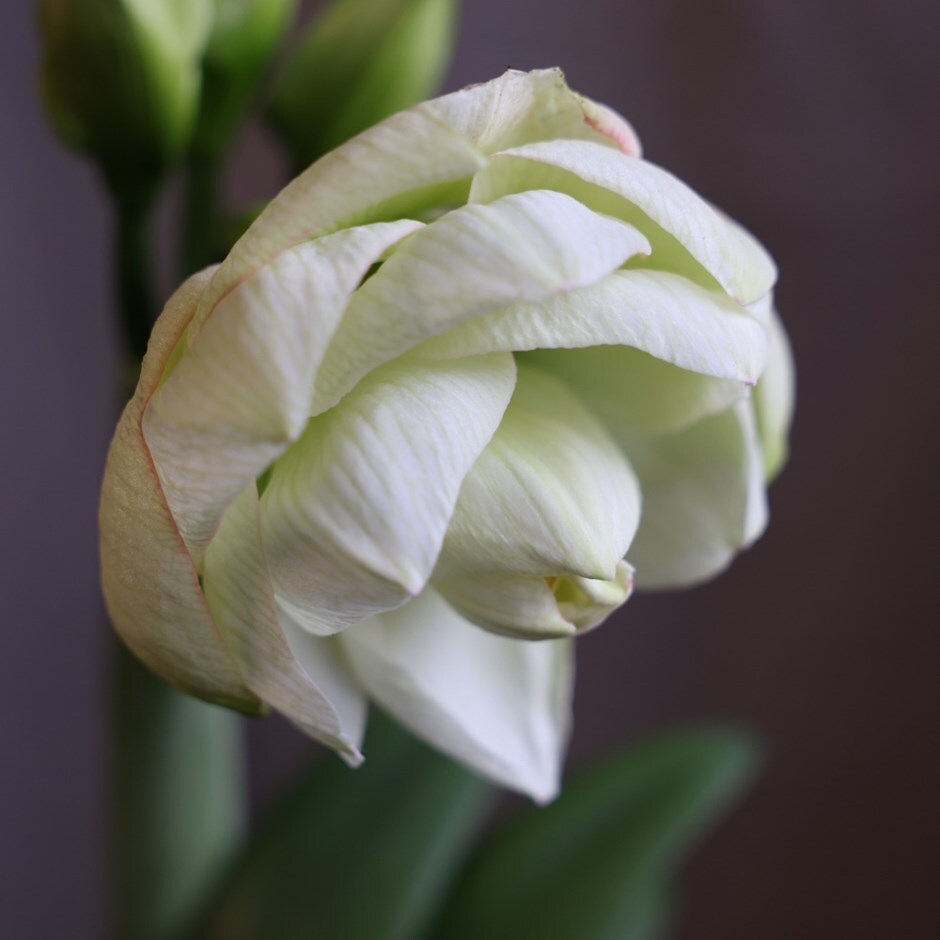Hippeastrum 'White Amadeus' (PBR)
amaryllis bulb
- Position: Bright light
- Soil: Peat free, general-purpose potting compost
- Flowering period: December to February
- Hardiness: Frost tender (will need winter protection)
- Bulb size: 26/28
New for 2023 White with occasional pink streaks and tips to the edge, ‘White Amadeus’ has sublime, fully double white ‘waterlily-esque’ petals. The overall flowering period does not happen simultaneously so the blooms can appear over several weeks, and last as long in a bright spot away from direct heat sources such as radiators. Amaryllis are easy to grow and perfect as a seasonal gift which will flower 7-10 weeks after planting.
Set the bulb in a pot containing good quality compost so that the top two-thirds are exposed. Water the compost only when the surface is dry; too much just after potting can cause the bulb to rot. Keep the plant in a bright spot avoiding direct sun, and rotate the plant periodically to avoid the emerging flower stalk leaning towards the light. Leaves will appear shortly after flowering.
Once flowering has finished, cut off the flower stalk 5-10cm above the bulb - don't cut off the foliage. Water when the surface of the compost is dry and feed fortnightly with a balanced liquid fertiliser. Reduce and cease watering from early autumn and move to a dry, dark spot for a few months allowing the foliage to die back, simulating the dormant, dry season of the plant’s native South America. In November bring it back into the light and begin watering again. Old foliage should be removed, though take care not to remove any new shoots. Expect flowers in six to eight weeks.
Please note that newly planted bulbs, using the technique described above, can take up to eight weeks to flower so plant or purchase as gifts in early November for flowering at Christmas. Bulbs purchased as gifts for Christmas are likely to flower from early February onwards.
Once flowering has finished, cut off the flower stalk 5-10cm above the bulb - don't cut off the foliage. Water when the surface of the compost is dry and feed fortnightly with a balanced liquid fertiliser. Reduce and cease watering from early autumn and move to a dry, dark spot for a few months allowing the foliage to die back, simulating the dormant, dry season of the plant’s native South America. In November bring it back into the light and begin watering again. Old foliage should be removed, though take care not to remove any new shoots. Expect flowers in six to eight weeks.
Please note that newly planted bulbs, using the technique described above, can take up to eight weeks to flower so plant or purchase as gifts in early November for flowering at Christmas. Bulbs purchased as gifts for Christmas are likely to flower from early February onwards.
- Humans/Pets: Harmful if eaten

